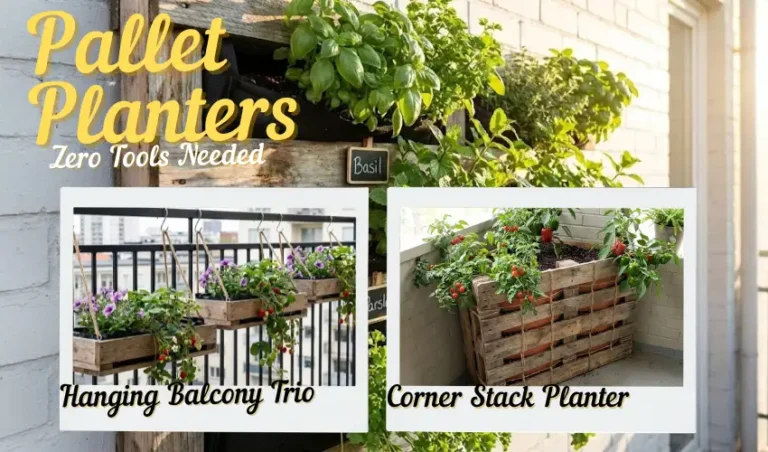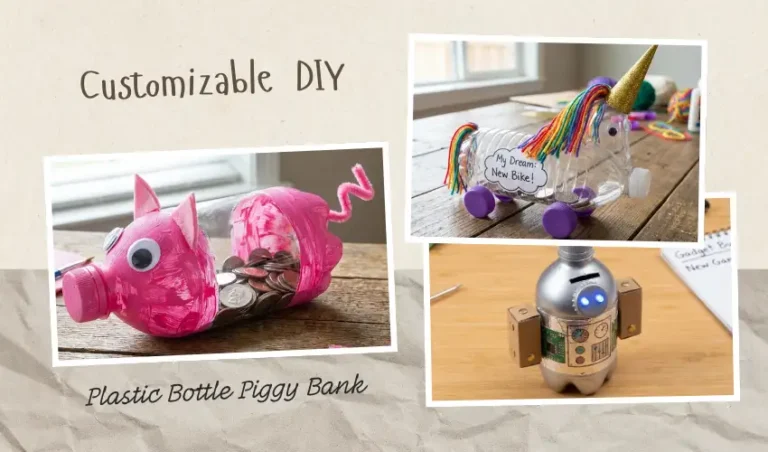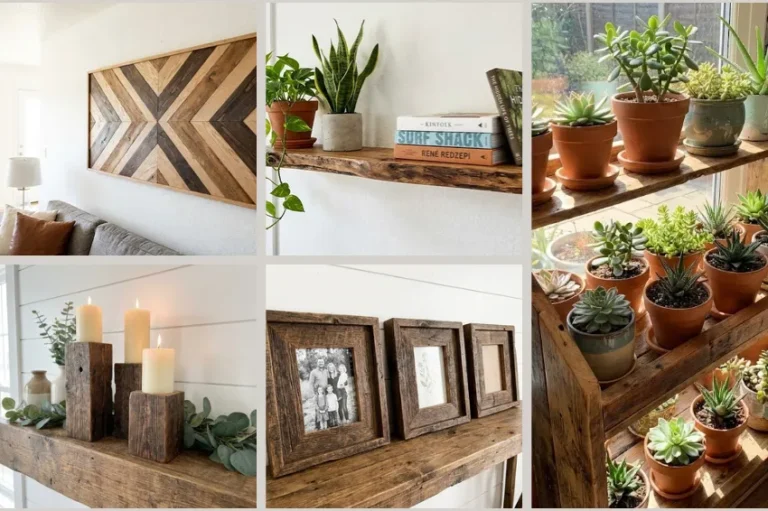Creative Craft Ideas with Recycled Cardstock: Transform Scraps into Stunning DIY Projects
Remember that stack of cardstock sitting in your craft drawer, looking at you with judgmental eyes every time you open it? You know the one—those leftover pieces from last year’s scrapbooking project, the mismatched scraps from your kid’s school art supplies, maybe even some old business cards you never distributed. Well, it’s time to give those paper orphans a second chance at glory.
Here’s the beautiful thing about recycled cardstock: it’s not just about being eco-friendly (Top Eco-Friendly Recycled Paper Craft Supplies for Sustainable Art). It’s about discovering that sustainable crafting doesn’t mean sacrificing style or quality. In fact, working with recycled materials often pushes us to be more creative, more resourceful, and yes, more budget-conscious. And in today’s world, where we’re all trying to reduce our environmental footprint without breaking the bank, that’s a win-win-win situation.
Whether you’re a complete beginner who’s never touched a glue stick or an experienced crafter looking for fresh inspiration, this guide will walk you through some genuinely exciting recycled cardstock craft ideas. We’re talking projects that’ll make your friends ask, “Wait, you made that from recycled paper?” So grab those scraps, dust off your scissors, and let’s turn trash into treasure.
Why Choose Recycled Cardstock for Your Creative Projects?
Before we dive into the fun stuff, let’s talk about why recycled cardstock deserves a permanent spot in your craft arsenal.
Quality That Surprises
Gone are the days when “recycled” meant rough, brown, and uninspiring. Modern recycled cardstock comes in gorgeous colors, varied textures, and weights that rival virgin paper products. Brands like Mohawk Loop Recycled Cardstock and Strathmore Recycled Cardstock have proven that eco-friendly doesn’t mean compromising on quality. These materials are smooth, durable, and perfect for everything from delicate card making to sturdy home décor projects.
Budget-Friendly Creativity
Let’s be real: crafting can get expensive fast. But recycled cardstock—especially when you’re repurposing scraps and leftovers—keeps your hobby affordable. Plus, you can often find Recycled Cardstock Bulk Sheet Packs at wholesale prices, giving you more bang for your buck while doing good for the planet.
Essential Tools for Working with Recycled Cardstock
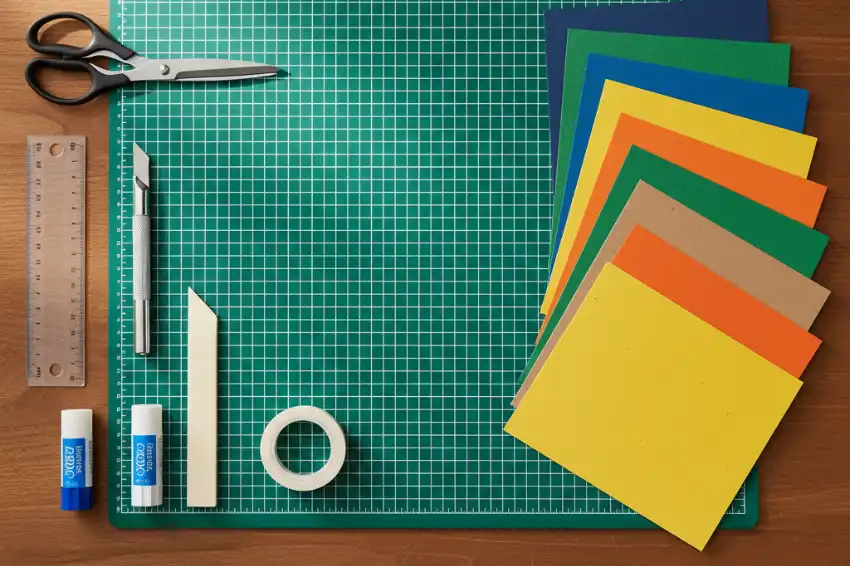
You don’t need a fully stocked craft store to work magic with recycled cardstock. Here’s what I recommend keeping in your toolkit:
Basic Must-Haves:
- Sharp scissors or a craft knife (dull blades and cardstock are mortal enemies)
- A metal ruler for clean, straight cuts
- A self-healing cutting mat to protect your surfaces
- Bone folder for crisp, professional-looking creases
- Quality adhesives: glue stick, double-sided tape, and liquid glue for different applications
Nice-to-Have Upgrades:
- Paper trimmer for precision cuts
- Corner rounder punch for polished edges
- Decorative edge scissors for added flair
- Embossing tools for texture and dimension
- Cricut Compatible Recycled Cardstock if you’re into cutting machines
The beauty of cardstock is its versatility. Unlike delicate tissue paper or rigid chipboard, it hits that sweet spot where it’s sturdy enough to hold shape but flexible enough to manipulate without specialized equipment.
Beginner-Friendly Recycled Cardstock Craft Projects
1. Handmade Greeting Cards That Actually Look Professional
Let’s start with the gateway drug of paper crafting: greeting cards. This is where most of us dip our toes into the crafting pool, and for good reason. Cards are small, manageable projects that deliver immediate satisfaction.
What You’ll Need:
- Recycled cardstock in your choice of colors
- Basic decorative elements (ribbon, buttons, stamps)
- Adhesive and scissors
The Process: Cut your cardstock to standard card size (5×7 inches works beautifully), fold it crisply using your bone folder, and then let your creativity run wild. Layer different colored scraps for depth, add a simple stamped message, or try your hand at paper quilling for elegant embellishments.
The magic of recycled cardstock for card making lies in its slight variations in texture and color. What might seem like imperfections are actually character markers that make each card unique. I’ve found that Strathmore Recycled Cardstock has this wonderful tactile quality that recipients always comment on.
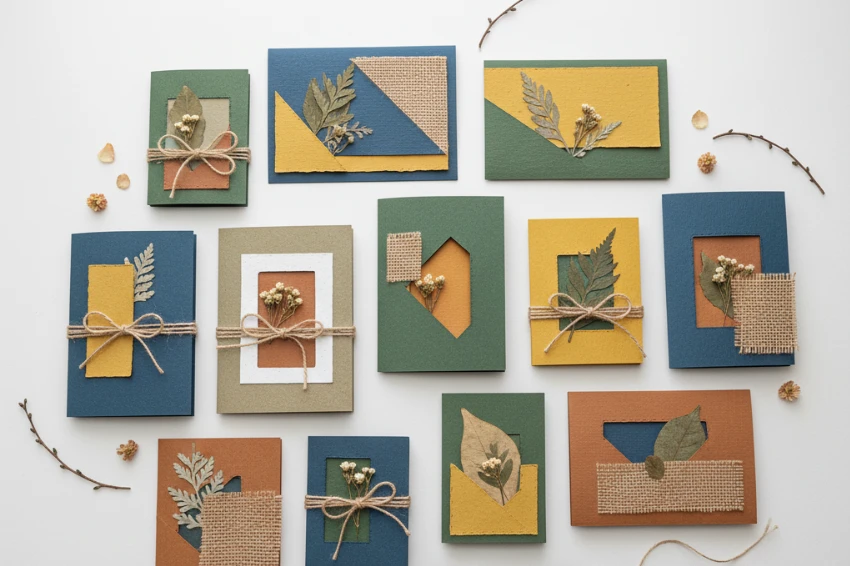
2. DIY Gift Tags That’ll Make Your Presents Stand Out
Gift tags are the perfect project for using up those tiny scraps you can’t bear to throw away. Seriously, even the smallest pieces can become mini works of art.
Quick Method: Punch or cut cardstock into tag shapes (rectangles, circles, or fun custom shapes). Add a hole at the top, thread some natural twine or ribbon through, and decorate with stamps, doodles, or even pressed flowers. Green Field 100% Recycled Kraft Cardstock gives you that trendy, rustic aesthetic that’s perfect for gifts.
Pro Tip: Make a whole batch during a Sunday afternoon crafting session. Store them in a decorative box, and you’ll always have the perfect finishing touch for any gift.
3. Handbound Notebooks and Journals
Creating your own notebooks from recycled cardstock is incredibly satisfying. There’s something deeply personal about writing in a journal you made with your own hands.
Simple Saddle-Stitch Method: Stack your interior pages (recycled printer paper works great), add recycled cardstock covers on the front and back, and bind them together using a simple saddle-stitch binding—basically just sewing through the center fold with needle and thread or even a long-arm stapler.
Papertree Recycled Stationery Notebooks offer excellent inspiration for what’s possible, but making your own allows for complete customization. Want a recipe journal? A garden planner? A gratitude diary? Your recycled cardstock, your rules.
Intermediate Recycled Cardstock DIY Projects
4. Stunning Paper Flowers for Every Season
Okay, confession time: I used to think paper flowers were cheesy until I made my first peony from recycled cardstock paper flowers materials. Now I’m completely converted. These blooms never wilt, don’t trigger allergies, and can be made in any color imaginable.
The Process: Cut petal shapes from cardstock (templates are everywhere online), curl the edges slightly using a pencil or dowel, layer them from largest to smallest, and secure with glue. Add a button or bead center, attach to floral wire, and boom—you’ve got yourself a sustainable bouquet.
The slight color variations in recycled cardstock actually enhance the realistic look of paper flowers. Each petal has subtle depth and character that perfectly mimics nature’s own imperfections.
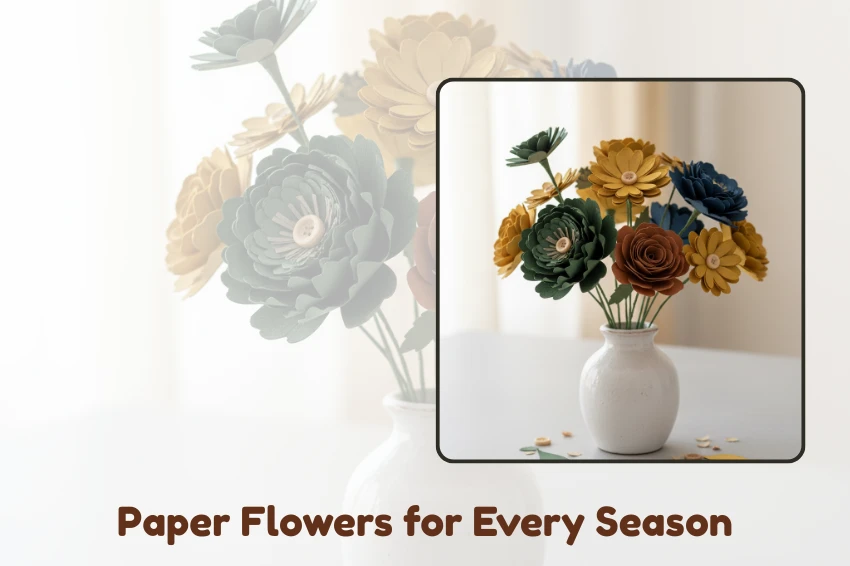
5. Recycled Cardstock Scrapbooking with Modern Flair
Recycled cardstock scrapbooking has evolved way beyond the busy, embellishment-heavy pages of yesteryear. Today’s aesthetic leans toward clean lines, thoughtful white space, and meaningful storytelling.
Contemporary Approach: Use neutral-toned recycled cardstock as your base pages. Kaleidoscope Scrapbooking Recycled Cardstock offers beautiful patterned options that add interest without overwhelming your photos. Focus on 2-3 photos per page, add a few carefully chosen embellishments, and tell your story with concise journaling.
Layout Ideas:
- Use cardstock scraps to create photo mats in complementary colors
- Punch shapes from recycled cardstock for scattered accents
- Create pockets from folded cardstock to hold memorabilia
- Design custom page dividers for different life chapters
6. Three-Dimensional Wall Art and Home Décor
This is where recycled cardstock really gets to show off. Because of its weight and structure, cardstock can be manipulated into sculptural elements that add serious visual interest to your walls.
Project Ideas:
- Geometric wall hangings: Cut cardstock into uniform shapes (hexagons, triangles, diamonds) and arrange them in ombré patterns or gradient designs
- 3D paper sculptures: Layer and fold cardstock to create dimensional art pieces
- Shadow boxes: Use cardstock in various shades to create depth within a frame
- Modern mobiles: Cut various shapes and suspend them at different heights for kinetic art
Recycled Textured Cardstock for DIY Décor adds an extra layer of sophistication to these projects, with surface variations that catch light beautifully.
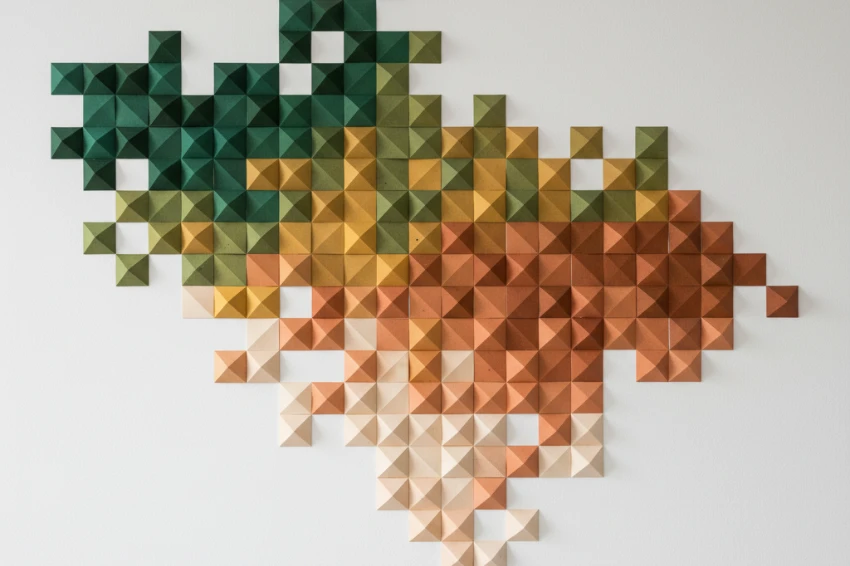
Advanced Creative Projects Using Recycled Cardstock
7. Elegant Wedding Invitations and Stationery Suites
Couples are increasingly choosing recycled cardstock wedding invites to align their big day with their values. And let me tell you, the results can be absolutely breathtaking.
What Makes Them Special: The subtle texture of recycled cardstock adds a tactile quality that feels premium and intentional. Paired with classic typography and minimal design elements, these invitations feel both modern and timeless.
Design Considerations:
- Choose heavier weights (80-110 lb) for professional structure
- Incorporate natural elements like pressed flowers or twine
- Consider Earthwise Seed Paper Cardstock for invitations guests can plant
- Use Avery Eco-Friendly Recycled Cardstock Envelopes to complete the sustainable package
8. Professional Business Cards That Reflect Your Brand Values
Recycled cardstock business cards send a powerful message: you care about quality, sustainability, and doing business responsibly. In an increasingly eco-conscious marketplace, this can be a genuine differentiator.
Design Tips: Keep it clean and readable. The texture of the cardstock itself becomes part of the design, so you don’t need to go overboard with graphics. A simple logo, essential contact information, and quality printing on Hammermill 100% Recycled Cardstock speaks volumes.
9. Paper Mosaic Art Projects
Recycled cardstock paper mosaic projects are meditation in craft form. There’s something incredibly zen about cutting small pieces of cardstock and arranging them into larger images.
Getting Started: Print or sketch your base image. Cut recycled cardstock scraps into small uniform pieces (squares work well, but experiment with other shapes). Apply glue to small sections at a time and place your cardstock pieces, leaving small gaps between them for that authentic mosaic look.
Upcycled Paper Mosaic Craft Kits provide pre-cut pieces and design templates if you want to try this technique without the prep work.
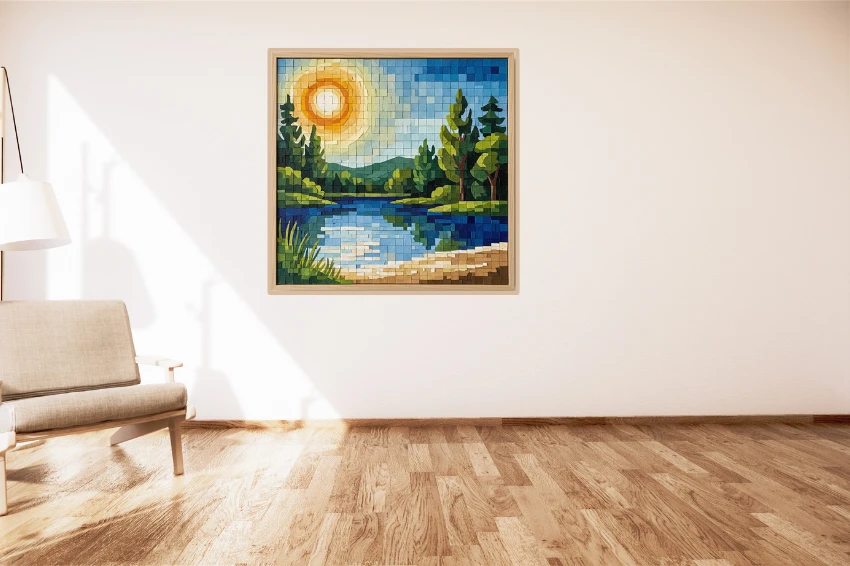
Family-Friendly: Recycled Cardstock Craft Projects for Kids
10. Simple Yet Engaging Kids’ Activities
Recycled cardstock craft projects for kids teach sustainability while developing fine motor skills and creativity. Win-win for parents everywhere.
Age-Appropriate Ideas:
- Younger kids (3-6): Simple collages, shape sorting, DIY bookmarks with stickers
- Elementary age (7-10): Paper chains, origami animals, handmade thank-you cards
- Tweens (11+): More complex projects like decorative boxes, jewelry making with paper beads from the Upcycle Recycled Paper Bead Craft Kit, or custom bookmarks
The EcoCraft Washable Recycled Paint & Cardstock Set is perfect for messy projects—because let’s face it, kids and crafts go together like glue and glitter (everywhere).
11. Educational Crafts That Teach Sustainability
Use crafting time to talk about environmental responsibility. Explain where recycled paper comes from, why it matters, and how their craft projects contribute to sustainability. Kids genuinely care about the planet; give them concrete ways to make a difference.
Interactive Learning Projects:
- Create a “trash vs. treasure” sorting game using cardstock cards
- Make recycling bins from cardstock to teach proper waste separation
- Design posters about environmental protection
- Build simple cardstock models showing the recycling process
Holiday and Seasonal Crafts with Recycled Cardstock
12. Festive Decorations for Every Celebration
Recycled cardstock holiday crafts let you decorate for every season without the guilt of single-use décor.
Holiday-Specific Ideas:
Winter/Christmas:
- Paper snowflakes (classic for a reason)
- Advent calendar pockets
- Gift card holders shaped like stockings or mittens
- Layered Christmas tree decorations
Spring/Easter:
- Egg garlands in pastel recycled cardstock
- Flower wreaths using paper blooms
- Easter basket name tags
- Spring bird mobiles
Summer:
- Watermelon slice bunting
- Beach-themed photo frames
- Ice cream cone garlands
- Picnic-themed table decorations
Fall/Halloween:
- Leaf garlands in autumn colors
- Pumpkin lanterns (with LED tea lights)
- Fall wreath embellishments
- Thanksgiving place cards
Recycled Cardstock Party Decoration Kits take the guesswork out of coordinating colors and designs if you’re short on planning time.
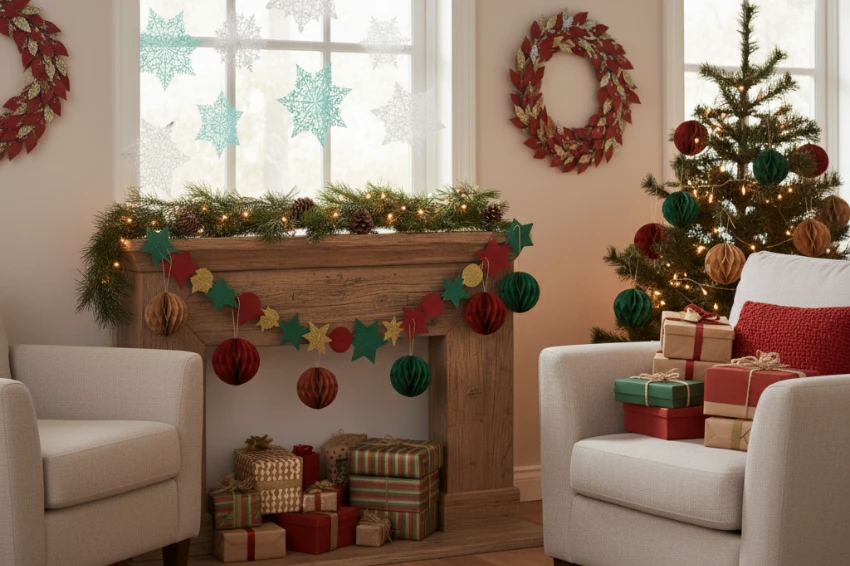
Upcycling Magic: Creative Uses for Cardstock Scraps
13. Never Waste a Scrap Again
The true mark of a sustainable crafter is what you do with the scraps. Those tiny leftover pieces have so much potential.
Scrap-Busting Projects:
- Confetti: Punch out shapes for eco-friendly party confetti (bonus: use Biodegradable Seeded Paper Gift Tags punches for confetti that can be planted)
- Bookmarks: Even narrow strips can become useful page markers
- Embellishments: Cut tiny shapes for card decorations
- Washi tape alternative: Cut thin strips for decorative borders
- Journal ephemera: Small scraps become perfect journal accents
- Color swatches: Save scraps to reference colors for future projects
Storage Tip: Keep a dedicated “scrap box” sorted by color. You’ll be amazed how often you reach for it.
Choosing and Sourcing Quality Recycled Cardstock
Understanding Cardstock Weights and Finishes
Not all recycled cardstock is created equal. Understanding the differences helps you choose the right material for each project.
Weight Guide:
| Weight | Best Uses | Examples |
|---|---|---|
| 65-80 lb | Layering, origami, paper flowers | Lightweight projects needing flexibility |
| 80-100 lb | Cards, invitations, scrapbook pages | Most versatile weight for general crafting |
| 100-110 lb | Business cards, tags, covers | Projects requiring structure |
| 110+ lb | Covers, boxes, home décor | Heavy-duty applications |
Finish Options:
- Smooth: Professional printing, card making
- Textured: Adds tactile interest, hides imperfections
- Matte: No glare, easy to write on
- Linen: Elegant texture for formal projects
Where to Find the Best Recycled Cardstock
Once you have your project idea, you’ll need the materials. We’ve compiled a complete list of the best brands, online stores, and buying recommendations in our main guide to the Top Eco-Friendly Recycled Paper Craft Supplies. That guide is your best resource for finding the perfect cardstock for your project.
Tips for Working Successfully with Recycled Materials
Technique Adjustments:
Recycled cardstock sometimes behaves differently than virgin paper. It may:
- Be slightly less uniform in thickness
- Have occasional fiber specks (that’s character!)
- Require sharper tools for clean cuts
- Need different scoring techniques
Embrace these quirks. They’re what make your projects unique and undeniably handmade.
Best Practices:
- Score before folding: Recycled cardstock can crack if folded without scoring
- Test adhesives: Some glues work better than others on textured surfaces
- Allow drying time: Recycled fibers may absorb adhesive differently
- Store properly: Keep cardstock flat in a cool, dry place to prevent warping
- Seal finished projects: Use spray sealant for outdoor or high-touch items

Combining Recycled Cardstock with Other Eco-Friendly Materials
The sustainability doesn’t have to stop with the cardstock. Elevate your eco-friendly game by pairing it with other green materials.
Natural Embellishments:
- Twine and jute for rustic touches
- Pressed flowers and leaves
- Wooden buttons or beads
- Cotton fabric scraps
- Natural dyes for custom coloring
Eco-Friendly Adhesives: Look for water-based, non-toxic glues. Many craft glues now come in eco-friendly formulations without sacrificing holding power.
Sustainable Embellishments: The EcoStar Biodegradable Glitter with Cardstock Pack lets you add sparkle without the environmental cost of traditional plastic glitter. Because who says sustainable can’t also be fabulous?
Building Your Skills: From Beginner to Expert
Progressive Learning Path
Month 1-2: Foundation Building Master basic cuts, folds, and adhesion. Complete simple projects like cards and tags to build confidence.
Month 3-4: Technique Expansion Experiment with scoring, embossing, and layering. Try your first 3D project or paper flowers.
Month 5-6: Style Development Find your aesthetic. Do you gravitate toward minimalist modern or maximalist vintage? Let your style emerge naturally.
Month 7+: Advanced Applications Tackle complex projects like wedding stationery suites or architectural paper sculptures. Consider selling your work or teaching others.
Resources for Continued Learning
Online Communities: Join crafting forums, Facebook groups, or Reddit communities focused on eco-friendly crafting. The Sustainable Paper Art Supplies Set community is particularly helpful for beginners.
YouTube Tutorials: Visual learners, rejoice! There are countless free tutorials showing every technique imaginable.
Local Workshops: Many craft stores and community centers offer classes. Learning in person accelerates your skill development and connects you with fellow crafters.
Turning Your Hobby into a Side Business
Once you’ve honed your skills, you might consider monetizing your recycled cardstock creations. The market for handmade, sustainable goods is robust and growing.
Popular Selling Platforms:
- Etsy (the handmade goods marketplace leader)
- Local craft fairs and farmers markets
- Instagram shops
- Craft co-ops and boutiques
Pricing Strategies: Factor in materials, time, overhead, and your skill level. Don’t undersell yourself—handmade sustainable goods command premium prices.
Business Considerations:
- Develop a consistent brand aesthetic
- Photograph your work professionally
- Write compelling product descriptions emphasizing the eco-friendly angle
- Package orders in sustainable materials
- Build relationships with repeat customers
Conclusion
Working with recycled cardstock isn’t just about crafting—it’s about participating in a movement toward more mindful consumption and creative expression. Every card you make, every gift tag you embellish, every home décor piece you create represents a small choice toward sustainability. And those small choices? They add up to significant impact.
The beauty of these projects is that they’re accessible to everyone. You don’t need expensive equipment, specialized training, or even natural artistic talent. You just need curiosity, some recycled cardstock, and a willingness to experiment. Some projects will turn out exactly as you envisioned. Others will become beautiful happy accidents. Both outcomes teach you something valuable.
So here’s my challenge to you: Choose one project from this guide and commit to creating it this week. Start with something simple if you’re new to crafting, or dive into a more complex project if you’re ready to level up. Share your creations with friends, gift them to people you love, or keep them as reminders of what you can create with your own two hands.
The world needs more makers, more creators, more people willing to see potential in what others discard. Your journey into recycled cardstock crafting starts now. What will you create first?
Frequently Asked Questions
What’s the main difference between recycled and virgin cardstock that affects my crafting?
Subtle Character: Recycled cardstock often has small, visible flecks or fibers from the recycling process. This is not a defect; it adds unique character.
Minor Variations: You might find very slight variations in thickness or texture across a single sheet.
Actionable Tip: For most hand-cutting and folding, you won’t notice a difference. However, if you use a die-cutting machine (like a Cricut) for intricate designs, it’s always smart to do a test cut first.
How do I fix mistakes when working with recycled cardstock—can adhesive be removed or cuts be salvaged?
Adhesive Mistakes: If you use wet glue, do not peel it while wet—you will tear the fibers. It’s better to let it dry completely and then try to gently separate the layers with a craft knife.
Cutting Mistakes: The easiest fix is to cover the error. Use an embellishment, a button, a ribbon, or a strategically placed label to hide the mistake.
Scoring Mistakes: You cannot remove a score line. The best option is to incorporate it. Add several more score lines near the wrong one to create an intentional, pleated, or textured design element.
How long do recycled cardstock crafts typically last, especially for important keepsakes like wedding invitations or baby books?
They last just as long as virgin paper, if you choose the right kind. The key is to look for cardstock labeled “acid-free” or “archival quality.”
Longevity: Acid-free paper (both recycled and virgin) can last for decades, even centuries, without yellowing or becoming brittle.
Storage: To ensure longevity, store keepsakes in an acid-free box or sleeve, away from direct sunlight and high humidity.
Display: If you are framing a recycled cardstock project, use UV-protective glass to prevent the colors from fading.
What’s the environmental impact comparison between buying new recycled cardstock versus reusing cardstock from packaging and old documents?
This is a great question about the sustainability hierarchy. Here’s the simple breakdown:
1. Reusing (Best): Reusing an old cereal box, file folder, or shipping box is the most eco-friendly choice. It requires no new energy. However, this material is often not acid-free, may have coatings, and isn’t ideal for professional-looking projects.
2. Buying Recycled (Great): Buying new, high-quality recycled cardstock is the next best choice. It supports the recycling industry and gives you a premium, acid-free product for important crafts.
My Advice: Use old packaging for practice, templates, or kids’ crafts. Invest in purchased recycled cardstock for projects you want to last, gift, or sell (like invitations, scrapbooks, and art).
Ready to start your sustainable crafting journey? Grab that stack of cardstock and let your creativity flow. Remember, the most beautiful creations often come from the simplest, most sustainable materials. Happy crafting!

